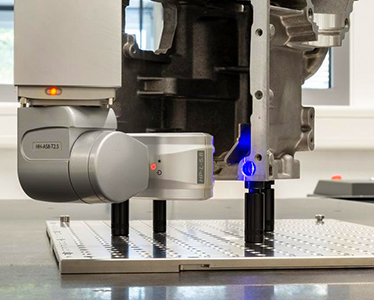Mechanical properties test.
2022-03-11
In order to meet the application requirements, steel castings and forgings usually have strict requirements on the mechanical properties of the parts. In addition to the chemical composition can determine the mechanical properties, heat treatment is alsoa key step to improve the mechanical properties.
We will provide mechanical property, hardness test and metallographic analysis report for each batch of castings, and other tests can be provided according to customer requirements.
Mechanical properties test
Mechanical properties are usually tested by professional testing equipment, such as tensile testing machine, impact testing machine and so on. During casting, each furnace will pour a test bar and inspect its mechanical properties. Therefore, in the mechanical report of Maple, the mechanical properties of the products can be traced back to the specific heat number.
The reference of mechanical properties are as follows:
Tensile strength: The stress of metal material under tensile fracture, unit: MPa (n / mm 2). It can be explained as the maximum destructive force.
Yield strength: When the metal is under tension, the external force no longer increases, but the plastic deformation of the material itself continues to increase, the stress at this time is called yield strength. It can be explained as the stress before the metal will be broken.
Elongation: The percentage of the total elongation to the original gauge length after tensile fracture.
Section shrinkage: Percentage of maximum sectional area and original sectional area of material after tensile fracture.
Impact value: The ability of metal to resist impact load, which is usually measured by the one-time pendulum bending impact test method.
Hardness test
Hardness test is one of the important indexes to verify the properties of materials. It can reflect the differences in chemical composition, microstructure and treatment technology of materials. Maple uses modern automatic machine to test the hardness of products.
Brinell hardness: A certain amount of load P is used to press the quenched steel ball with diameter D into the surface of the metal to be measured, and the load is removed after holding for a period of time. The ratio of load P to indentation surface area F is Brinell hardness value, which is recorded as HB.
Rockwell hardness: A diamond cone with a vertex angle of 120 degrees is pressed into the surface of the tested material under a certain load. The hardness of the material is calculated from the indentation depth. If the sample to be tested is too small or the Brinell hardness (HB) is higher than 450, Rockwell hardness measurement is better.
Vickers hardness: A diamond pyramid indenter with an angle of 136 degrees between the opposite planes is used to press into the surface of the tested sample under the action of the specified load F. after holding for a period of time, remove the load, and measure the length of the indentation diagonal, and then calculate the indentation surface area. Finally, we can get the average pressure on the indentation surface area, which is the Vickers hardness value of the metal, and is represented by the symbol HV.
Metallographic analysis
Ductile cast iron is spheroidal graphite obtained by spheroidizing and inoculation, which effectively improves the mechanical properties of cast iron, especially the plasticity and ductility, so as to get better strength than carbon steel. The graphite of ductile cast iron is spherical or nearly spherical, so the stress concentration caused by graphite is much smaller than that ofgray cast iron with flake graphite. In addition, spheroidal graphite does not have serious splitting effect on metal like flake graphite, which means that the matrix structure and properties of ductile iron can be improved by heat treatment. Therefore, the examination of graphite and matrix structure of ductile cast iron is an important step in the production of ductile iron castings.
Maple usuallyexecutes metallographic analysis on the structure ofductile cast iron, and strictly controls the spheroidizing rate ofductile cast ironparts. The material with spheroidizing rate ≥ 90% is qualified.























































